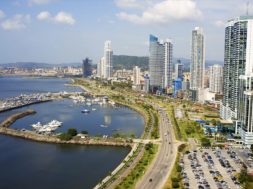On simply hearing the name, Bali evokes visions of tropical paradises. Writers keep inventing adjectives to describe Bali but few can surpass the words of Indian prime minister Pandit Nehru who named the island “the morning of the world”. A world born out of the sea, delivered by the power of volcanic force. There is a deep world, a world within, the true morning of the world, a whole different world that belongs to Bali. A blue world of tranquility, of stillness, a world that lets you forget the world…
As Indonesia’s most famous tourist destination Bali has remained a somewhat underestimated diving destination. To believe this would be a mistake.
If you dive Bali you will see that the diversity of Bali’s reefs are awesome. When diving in Bali, allow yourself to be surprised. As far as diving in Bali is concerned, Bali’s greatest charm is its wide range and variety of dive sites. Shipwrecks, drop offs, sand slopes, black volcanic seascapes, roaring currents and quiet bays… all tastes are accommodated.
There are plenty well maintained diving facilities on Bali.
There are four main diving areas in Bali that you can explore.
Nusa Penida:
Nusa Penida and the neighboring island of Nusa Lembongan offer some of the finest Bali diving. Nusa Penida is a large island located in the southeast of Bali, across the Badung Strait. The Balinese consider this dry, rough island to be haunted, but it is the diving around this Island of Bali, in it’s clear, current swept reefs that’s the main attraction.
With its adjacent deepwater trenches, the main attraction at Nusa Penida is the common encounters with the curious and otherwise very rare oceanic sunfish, or Mola Mola, that come close to the reef to visit cleaner stations.
There are a great many dive sites to choose from. In the season we can try to find the illustrious Mola Mola, but the heartland of Nusa Penida diving offers stunning visibility, healthy reefs, and pelagics. And you won’t even have to swim a lot here, as almost every dive is a drift dive.
Currents are often strong because the islands lie right in the path of the Indonesian Throughflow. The Lombok Strait separates the Indonesian islands of Bali and Lombok, it is the second most important strait through which water is exchanged between the Pacific Ocean and the Indian Ocean. The best times to dive Nusa Penida are when the tides peak at slack and high, when water movement is the least.
Amuk Bay (Candi Dasa & Padangbai):
Amuk Bay, with the villages of Padang Bai in the south and Candi Dasa in the north, is about 6 km across and located along the south side of Bali’s eastern point. Close to Candi Dasa there are two larger islands, Tepekong and Biaha, as well as an area with small rocks called Mimpang or Batu Tiga.
The islands in this bay are actually little more than current swept rocks, and have an untamed beauty. The bay, which is fed by the rich south Bali upwelling, hosts’ sharks, mola mola and schools of fish, making these Bali dive sites quite exciting.
If you are interested in special small critters you should be diving around Padang Bai. This tiny inlet is fringed with reef that starts as a shallow ledge at a depth of ten meters. Macro fans will have fun diving around Padang Bay and the Blue Lagoon, where all manner of critters can be found in the shallows. The sheltered bay is also an ideal location for night diving.
The diving in this area is astonishingly rich. There are also several excellent dive sites for sharks, rays, large schools of fish and this is one of the places where Mola Mola ocean sunfishes are regularly sighted from August until October. Water temperatures are quite chilly, there is always a bit of surge but visibility is normally quite good.
Amed and Tulamben:
Tulamben, home of the famous WWII wreck, is the most known and the best loved diving site in Bali. Tulamben Bay, is situated in the world’s richest marine biogeography zone with more than 2500 different species of fish and 700 corals. Situated on the northeast coast, the bay receives very plankton rich water from the major ocean current that moves from the Pacific to the Indian Ocean and vice versa.
Amed is located on the northeast coast of Bali, about 2.5 hours drive from Kuta. From a landscape point of view, Amed is much prettier than Tulamben. You will see many rice fields along the way, traditional salt-panning and also sandy beaches as opposed to Tulamben’s stony beaches. The diving in Amed is still untouched and you will encounter few fellow divers on these dive sites.
There are also excellent dive sites that extend from Tulamben to Amed and almost all the way to Bali’s eastern tip, some recently discovered, many still waiting to be explored. The black sand bottom offers a dramatic backdrop for the amazingly rich fish life.
Menjangan Island:
The reefs of Northwest Bali around Menjangan Island are some of the most protected on the island.
Clear calm waters, a mysterious old wooden shipwreck, and rugged, gorgonian covered walls in excellent condition, make Menjangan Island on Bali’s northwest coast, a premier dive site.
About 14 dive sites to choose from with clear water and calm conditions. Menjangan is part of the West Bali National Park. It are the rugged gorgonian covered walls that make this island Northwest Bali’s premier dive site.
The coral walls around Menjangan drop vertically to between 30-60 meters, before gradually sloping outwards. The reef surface is very rugged with caves, grottoes and crevasses breaking up the coral walls, textured with little nooks and crannies. Gorgonians of many kinds reach large sizes here, and huge barrel sponges are abundant. Soft corals blanket the colorful walls all the way down.
Menjangan’s western tip holds a deeper, but equally interesting dive on an old wooden shipwreck. Called the “Anker” it is just off the island shore, close to a small Park Service dock and guard post.
More to the north, Gilimanuk offers some fantastic muck diving in Secret Bay and South there is an equally interesting muck site at PJ’s.
Now at last you can discover Bali’s underwater world in a personal and complete way with Dive Around Bali. Feel free to contact me for more information.
Michel De Ruyck.
Michel is an experienced PADI instructors from Belgium and has been living and working in Bali for four years. He also worked in the Philippines, Komodo and Sulawesi. Michel fell in love with Bali and like to share that love with others who want to discover The Morning of the World… Michel is a passionate underwater photographer and has an extensive knowledge of the marine life and dive sites around Bali and it’s people and culture that roams the land. He has published his pictures in several magazines. Now he runs together with his wife a diving tour operator for dive holidays on the Island of Bali.





